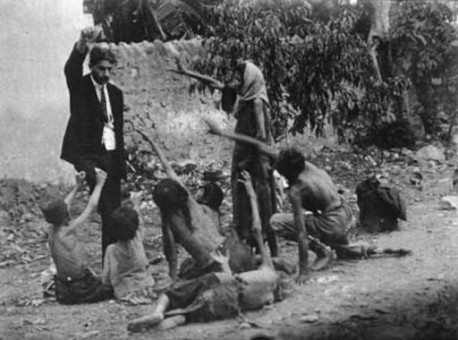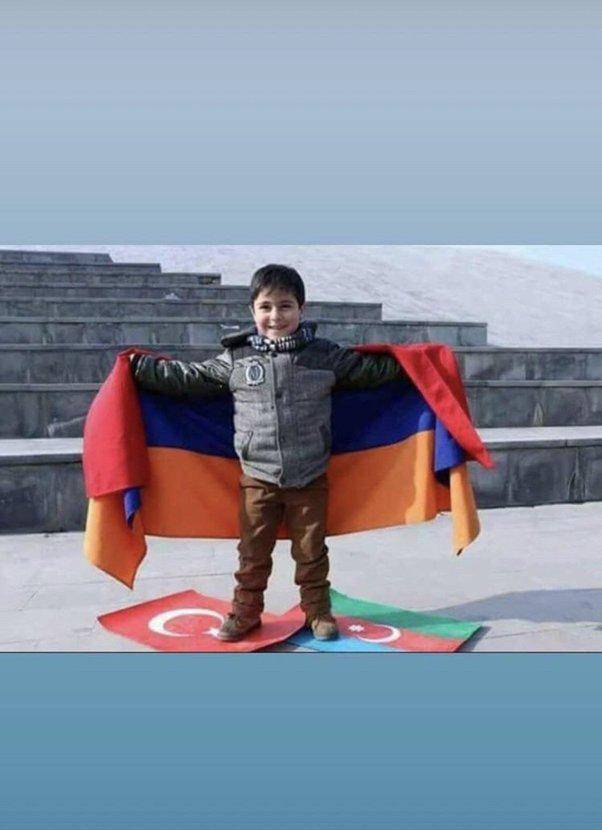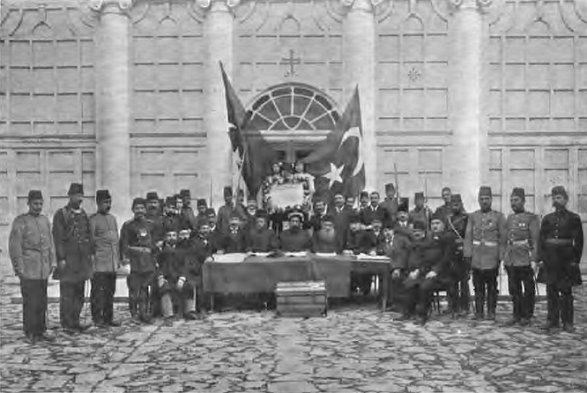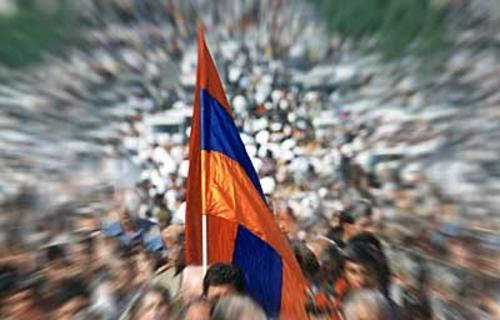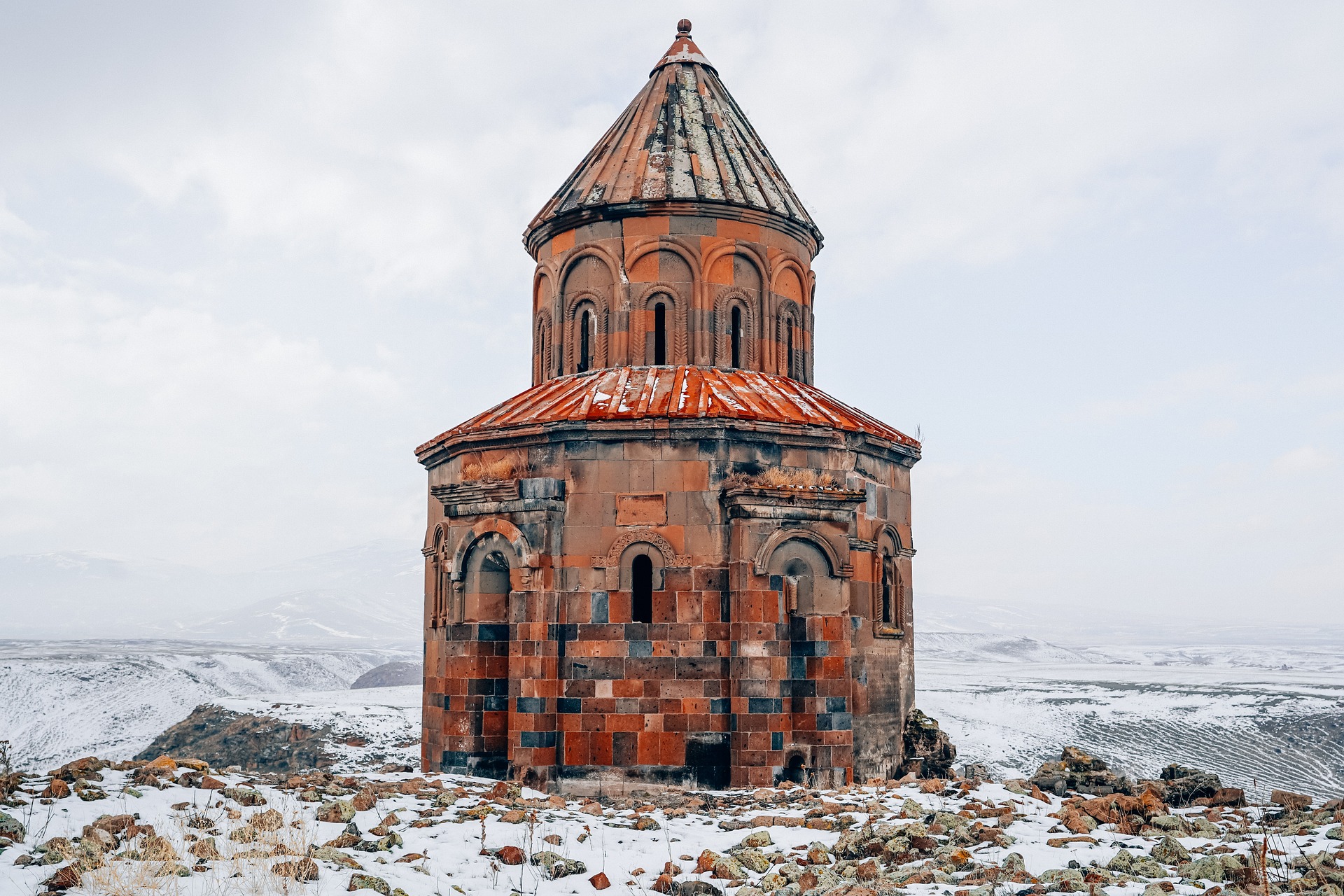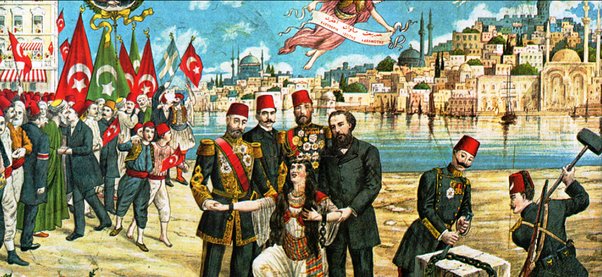OTTOMAN ARMENIANS: “WHO KILLED WHO ?”
I. Introduction: “Chronology and History”
These two branches are confused in general; unfortunately, we witness such confusion initiated by several persons, having studied history.
In fact, while the first of these branches places the events in time and place, the second branch researches or is obligated to research reasons and consequences of such events. While the history is making the research, it shall stick to the time-table presented by the chronologist, but at the same time evaluate its information on legal, cultural, geographical, sociological matters and the like.
We will able to get the conclusion only after the examination we would carry out under the following titles:
II. Reasons Triggering Degeneration of the Ottoman-Armenian Relations
1. Sovereignty Fight Lasted for five (5) Centuries in the Balkans: “Bogomilism”
When the Ottoman/Turkish Army entered the Balkans in the mid of XIVth century, both anarchy and despotism existed in the peninsula. The political power was tyrannically exploiting small principalities based on territory and the village class people through these principalities and the village class people were not able to resist impositions and insistences of the political power and were being oppressed by the bandits living in the rural areas.
On the other hand, the real victims of the fight between the churches were the small principalities and the villagers; while the Catholics on one hand and the Orthodoxies on the other hand were fighting. Large blocks of people were wildly being exterminated by these two denominations, as they have strictly believed in Bogomilism.
The Ottoman Empire has benefited such situation by the way of securing and protecting the oppressed classes; and therefore in a short period of time, it could find the way to settle in the Balkan peninsula. In the meantime, Turk tributes continuously and Sufistic Connoisseurs (“Tasavvuf Erbabı”) migrating from Asia were constantly being placed in the Balkans. Although this spread was suspended and even regressed upon lost of Ankara war in the East and dissolution of the Ottoman Empire, it was going to be completed more strongly than ever within fifty years and the South and Central Balkans were going to be Ottomanized/Turkicized. In the mid of the XVth century. Ottoman-Germen fight was going to continue for one more century in the North Balkans, constituting the current Hungary. The challenge on the Balkans was going to continue until the beginning of the XVIIIth century and until even today. The difference is that Austria, representing the Germen authority, left its role to the Tsarist Russia since XVIII.
Russia, which has been more dangerous than the Austrian Empire, has planned the policy of “sailing along the warm waters” for establishing its sovereignty in the territory and considered this as a matter of life and death. However, this has been considered by Austria as an economic development area. Then, having eliminated its powerful neighbor Sweden, it has edged towards the Ottoman Empire with all of its power but had to divide its power, as Austria could not have solved its problems in the Western Europe. However, the most important point is that as Austria was catholic, the Orthodox Church was on the side of the Ottoman Empire. At that time, Russia usurped the church. Furthermore, Russia’s being a Slav Country was going to turn the conflict between the church and the nationalists to its own pims; so the Ottoman was going to gradually be considered to be a foreigner or occupier in that territory.
2. Russia and Pan-Slavism: “Küçük Kaynarca Treaty and First Political Losses”
Nobody should doubt that that the date to be considered to be milestone in Ottoman-Russian fight was the execution of 1774 Küçük Kaynarca Treaty. Until this date, Ottoman Empire from time to time lost or won the wars it entered; but, no records other than border arrangements and/or commercial matters have been kept to bear political consequences. However, it was the first time that it was accepted in this treaty that Russia was the protector of the orthodoxies in the Ottoman State and they would be able to open a consulate anywhere they wish.
This situation, considered unimportant by many of our well-known historians, has been described by Hammer, Austrian Historian as follows: “…this peace has been the reason for all the troubles of the Republic of Turkiye (“Turkiye”) since then and has been the commencement of dissolution of this Empire and was going to cause disintegration of the same at least in the West”.
Before ending this matter, we should emphasize: “these provisions, considered to be critical, have been continuously imposed to Turks thereafter and are still imposed even today.” We call you to think on this matter.”
However, we would like to draw attention to the expression of “at least in the West”. This is because, at that time, Armenians were still considered “Loyal Nation” as expressed as “Tebaa-i Sâdıka or Millet-î Sıdıka” in the Ottoman Turkish and they were not expected to have contrary acts against the State. Anyhow, there has been no reason for such a contrary action; this loyal nation has increased their welfare by conducting the activities of trade and by governing the foreign relations of the Ottoman Empire.
Upon the execution of Küçük Kaynarca Treaty, the Russians have increased their activities in the Balkans. They have established consulates and accordingly, sensitive zones. They have firstly formed armed committees by sending weapons and ammunition and even rebels; and afterwards caused rebellions. They had roles in establishment of independent Romania, Greece and Serbia. However, they could not in any way rouse the Armenian public mind in the Eastern Anatolia; because Armenians have preferred to be under the control of the Ottoman Empire where they have dominant situation in economic terms, as they had fear for religious sovereignty to possibly be established by Orthodox Russia. This lasted until the mid of the XIXth century.
3. Events until Paris Imperial Reform Edict: “The Issue of Minorities”
Russia already seized the Eastern Anatolia in 1828s and has been in close contact with the Armenian population. A significant change occurred in the mid of XIXth century. Having expanded, Russia reached the border of India; and England has suffered from this progress and France has suffered from availability of Russian navy in the Mediterranean. In the future these two countries, would on the side of the Ottoman Empire (in the future the Kingdom of Piedmont would join to them) declare war against Russia by using Russia’s request of control of the straits as an excuse.
Although Russia lost the war, the peace settlement was going to cause dissolution of the Ottoman Empire. However, after England had secured the Indian border and together with France, settled the matter of Straits, these two countries put the “Matter of Minorities” in the Ottoman Empire on the agenda, as if they won the war together with Russia against the Ottoman Empire; and thereafter, commenced to discuss the articles required to be accepted by the Grand Governorship. Sublime Porte, afraid of such a plot hatched against it, was obligated to declare in Istanbul a mandate including a series of arrangement upon recommendation and even intervention of a French Representative, while Paris Conference was going on. This mandate was briefly regarding equal rights and liabilities granted to non-Muslims in the Empire.
It is quite strange that the objection to the provisions of this mandate was raised by the non-Muslims, who have been granted equal rights with the Muslims. Moreover, even Fener (“Phanar”) Greek Patriarch has read the mandate and stated “I hope it would not any longer come out of its bag” and replaced it into the bag. The reason is quite simple: “Equal rights and liabilities as well as the status of the Muslim Ottoman Society, who spent 20 years of their lives in the military service and failed to penetrate into the commercial life, do not suit the purpose of the other societies in the Empire, who have been exempted from the military service until that time”. However, Europe has placed pressure on this matter and the non-Muslims would have been exempted from such duty by the way of payment of the “cost” of the military service and would have maintained their economic superiority.
During all of these arrangements, Armenians were still loyal Ottoman citizens, who have been stuck to the State. However, this was not going to last long !..
Due to the influence of the missioners, who have entered from the borders, opened following Paris Conference, and due to enthusiasm for the scholarships granted, Armenians were going to be willing to go to Europe or Russia and start to be organized against the State there. However, it is not coincidence that committees, which were going to be, in the future, a great trouble to both Armenians and Turks, have been established in either Europe or Russia: “Taşnakustyan (“Taşnak” or “Tashnak”) Committee was established in Tiflis and Hinchak (“Hınçak”) Committee was established in Geneva.”
Following the Treaty of Ayastefanos executed on March 3, 1978 after the war called “93 War”, concluded with great defeat of the Ottoman Empire and following the Berlin Conference, which is a darned version of the preceding Treaty in terms of borders; the Ottoman shrinked in the east; therefore, 800 years of Turkish sovereignty in the North-East Anatolia ended; and the territories as well as the Muslim society living thereon were left on the hook of the Armenians together with whom they have lived for 800 years.
The Ottomans, aware of the aforementioned facts, have been obligated to ignore a series of agitations in the country due to binding treaties and in order to prevent any jeopardy to the Muslims left on the hook of Armenians. Of course, this situation was going to be considered to be soft spot of the Ottoman Empire and the Armenian societies were going to aggravate the situation. For instance, members of Hinchak Committee were going to start consecutive rebellions.
4. Ottoman – Russian War: “Erzurum Cemetery, Dram and Muslims Force to Emigrate”
While border arrangement was being made following the Ottoman-Russian War in 1978, Russian delegates and Ottoman Delegates gathered at the provincial house. Russians demanded the province of Erzurum in addition to Kars, Ardahan and Ağrı, they occupied in this war. As support, or in other terms proof, for such demand, they asserted the claim that the majority of the population of these territories was constituted by Armenians. Upon such claim, one of the Ottoman delegates took the Russian delegate by the arm to the window and said: “this is the Erzurum Cemetery; this large land from here to there is the cemetery of the Muslims and this small part is the cemetery of Armenians. As we know, Armenians bury their corpses as we do, but don’t eat !..” This dialogue is in fact quite dramatic.
Then, the idea adopted in the East was: “If a peace negotiation is held and the population of one of the parties is higher than the other one’s, the other party is going to loose the relevant territories” Therefore, the Muslims on the other side of the border were forced to emigrate with pressure of any nature. When the war was started, Armenians on this side of the border were compulsorily being repressed. We should particularly state that while the oppressions to the Muslims in the Russian side were wildly being made by Tashnak Armenian Guerillas, the obligatory emigration on this side of the border was conducted by the disciplinary gendarme.
5. 1914 Declaration of War against Russia and Armenian Rebellions: “Obligatory Emigration-Emigrants”
As soon as war was declared against Russia in 1914 autumn, Russia forced approximately 387,000 Muslims to immediately cross the border and emigrate into the Ottoman Side. Afterwards, the Sublime Porte decided that the villages would be evicted excluding Armenians, such as the doctors, pharmacists and veterinaries, offering public services in the villages on the borders; and the emigrant Armenians would be transferred and placed in the South under security; and the immigrants coming from the Russia would be placed in the evicted villages.
Three points should be considered in this decision:
i. The decision was made after Russia had forced the Muslim society to emigrate.
ii. The decision is not related to emigration of Armenians and members of several occupational group living in the provinces. This means that this is not a decision made against a group, as they are Armenians.
iii. The decision has arrangements with respect to that Armenians would be sent to South for residence and the assets of these Armenians would be sold and the costs of the same would be delivered to them or to the Armenian church, in case of failure in finding the owners of such assets. Documents evidencing such arrangements are available.
6. Obligatory Emigration Circumstances: “Fatigue, Diseases and Kurdish Bandits”
At the preliminary stage, 180,000 – 300,000 Armenians were gathered together and repressed from their villages and collectively caused to depart towards the South. This departure lasted under quite hard circumstances and particularly old population died of fatigue and diseases and young population in considerable number died of the attacks of the Kurdish Bandits. There are many telegrams filed by the guardian officers requesting subsidiary forces.
7. Armenian Rebellions: “Yozgat and Tokat”
In the meantime, there has been considerable number of Armenians stayed. These have been Armenians living in the provinces or those, succeeded in staying in the villages by hiding or bribing. Those staying in the territory (Erzurum, Oltu, Erciş, Van, Malazgirt, Muş surrounding, Tekman), occupied by general attacks of the Russian Army upon Sarıkamış Event and in the provinces left to Russia by 1978 Treaty, have put to the torture and killed the Muslim society in the territory. As for Armenians living in the provinces; the major evidence that these Armenians have not been forced to emigrate is 1917 Yozgat, 1917 and 1918 Sivas Armenian Rebellions. If these Armenians had been murdered, it is so hard to understand how they were up in arms !..
8. The fact of Van: “Paris of the Orient”
We kindly ask you to allow us to disclose a fact, the evidence of which still exists today, about Van with respect to which we have talked to the old people:
The city of Van has born the title of “Paris of the Orient” and the Muslim or Non-Muslim ladies of Van had been wandering around the lake by silver embossed phaetons at sundown at the beginning of the last century according to the claims. The population of Van had consisted of 1/3 Muslims, 1/3 Armenians and 1/3 Jews.
Well off Muslim society had resided in the quarter on the coast of the lake in the skirts of the castle, remained from the ancient Urartu times, and all of the aforementioned societies had lived together in the skirts of the mountain, 4-5 km far from the lake.
After the Russian Army had arrived, a considerable number of Muslims left Van together with the Turkish Army falling back towards Edremit. Afterwards, Armenians of Van set fire to the Turkish quarters and in their own words “they left not a stick standing”. Relevant evidences are available.
Even, according to what told by an old native of Van, “Armenians of Van, who hide their neighbors, have shipped these people in the vessels for the so-called purpose of missing them, brought them to Ahdamar Island under the Armenian Control and shot them”. When the Turkish Army pulled back Van, Armenians of Van, afraid of retaliation, evicted their quarters together with the Russian Army falling back. The Turks coming resided in the evicted Armenian quarters. Then, magnificent city of Van on the coast of the lake disappeared and today’s Van became a land city.
9. “Armenian State” and “Armenia” in Kars
Armenians, surviving compulsory emigration, has put to the North together with Russian Army falling back in all directions. They have settled down in the “Kars centered Armenian State”. The life of this State has been so short and they have been repelled by Kazım Karabekir Pascha as far as today’s Armenia and left Anatolia.
III. Incrimination of Armenian Genocide: “Malta and Berlin”
1. Malta: “No Evidence”
As mentioned in the first section hereof, Cabinet in London had difficulties, as no evidence could have been collected about 140 high officials of the State sent to Malta by English forces, based on a series of crime regarding massacres against Armenians in South Caucasus (refers to Eastern Anatolia within the borders of the Ottoman Empire).
However, the Cabinet in London has called off establishment of courts as per Article 230 of Sèvres Treaty, as they could not have found any evidence either in the archives under their possession or in the archives of the Ottoman. Nevertheless, they have decided to request from the USA authorities to submit evidences and documents these authorities have been supposed to possess (!), in order to procure that those in Malta were going to be arrested to no purpose.
In the meantime, the Chief Public Prosecutor of England, with its Note dated July 29, 1921, stated that there had been no possibility to file an action based on the documents submitted to them as evidences or statements, the reality of which had been impossible to be believed by any court.”
Having made the situation worse, the response coming from USA has caused disappointment. Washington Embassy in England (dated 13 July 1921 and by British Ambassador Mr. R.C. Craigie in Washington), in its Letter issued to Lord CURZON Committee, authorized to prepare files of the actions against the arrested officials in Malta, has stated: “There is no evidence available regarding the aforementioned arrested officials and there are several groundless oral complaints about two of them. The original of this document is as follows:
‘………. I regret to inform Your Lordship that there was nothing there in which could be used as evidence against the Turks who are being detained for trial at Malta…..
Having regards to this stipulation and the fact that the reports in the possession of the Department do not appear in any case to contain evidence against these Turks which would be useful even for the purpose of corroborating information already in the possession of His Majesty’s Government.’.
We would like to draw attention to one point herein: “No evidence could have been found against the arrested officials at Malta”. We would later on return to this matter while evaluating the legal situation.
When the required evidences could not have been found in USA, the English Government has waived from all of its claims and converted the arrested officials into political hostages from the status of possible offenders and accepted their exchange with the prisoner Englishmen in the Anatolia on a subsequent date; but this matter is out of the scope of our matter in respect of its feature.
2. Berlin: “Tayleryan who murdered Talat Pascha” and “Andonian Documents”
The second stage of the request of referral of the event to international platforms has been launched in Berlin.
Talat Pasha, the second important person of the Union and Progress Government (İttihat and Terakki) and the last Grand Vizier of the Ottoman Vizier, was shot by an Armenian commissioner named “Tayleryan” in May 1921. The murderer was caught. At the trial of the relevant case, it was claimed: Talat Pasha is responsible for genocide against Armenians (the first pronunciation of the word “genocide”) and Tayleryan is not a murderer but an executor and he acted in such a manner under a grievous provocation.” As evidence for this case, telegram texts, which were going to be named “Andonian Documents” in the future; which have been claimed to have been issued from Istanbul Internal Affairs Office (Ministry) (to Şam and Halep Administrations), then handwriting copies of the same were submitted to the court, as the “originals”, have been burned in a fire, as claimed. In these documents, expressions ordering eradication of Armenians brought for imprisonment were used. The Court REJECTED to take these into consideration as evidence.
These documents have been quite important in claims regarding Armenian Genocide and have even been known as the only source.
Although the Turkish side has claimed that these documents have been false; and that neither the style nor the numbers thereon nor the writing technique has not been compatible; nobody has believed this. Consequently, 75 years has elapsed from these events and falsity of these documents has been detected after the archives were opened and examined.
[* A Technical Matter: A internal affairs telegram may not be deleted from the archives; this is because it is registered in at least six books from the Ministry (Office) to the Administrations (Ministry’s roes, telegram arrival book, telegram acceptance book, receiver telegram house entry book , telegram delivery roes and administration’s entry book). Moreover, nobody claims this; but we wrote for those, who may possibly not know.]
When it was detected that these telegrams were false, came the most ridiculous defense from the Armenian supporters: They firstly claimed; “Armenian genocide has been carried out in the past because Andonian Documents evidence this genocide”, later they started to claim: “Falsity of the Andonian documents does not change anything, this is because it is real that these events occurred.” (Chalian; Les Armenians).
IV. Sèvres Peace Treaty: “Negotiations”
In the meantime, Sèvres peace negations have been held in Paris. Some of you may perhaps wonder why Sèvres Peace Treaty Negotiations have been held in Paris (and signed on August 10, 1920). This is quite simple; Sèvres Peace Treaty was negotiated by and between the winners at a hotel room in Paris; furthermore, they have neither accepted the interview request of Ottoman Grand Vizier, who has begged for being heard, nor read the letter send by this Grand Vizier.
During these negotiations, any and all opposing groups or ethnic groups, including but not limited to Armenians, were heard but the Turks were REJECTED. After issuance of a decision, the Ottoman delegates were called to Paris and notified of this decision.
Referral of the event to the international platform by Armenians has not come to naught and they have been granted the Eastern Anatolia by a treaty.
When during the war of liberation, the Eastern Provinces were taken back by the 3rd Army, the Armenian events were completely forgotten.
After execution of the Peace Treaty of Gümrü (dated December 3, 1920) which ended this action, the chief delegates of both sides each uttered only one but expressive word:
– “Having left the pen, Turkish chief delegate, asked the Armenian Chief Delegate: “WHY ?.”
– The response of the Armenian Chief Delegate was “WE’VE BEEN DELUDED !..”.
V. Armenian Diaspora: “ASALA” and Kurds: “PKK”
Hereafter, deceptions were tended from Armenians to the Kurds. The requests of Armenians have been forgotten due to the effects of Dersim and Sheik (“Şeyh”) Sait rebellions, financial crisis of 1930s, 2nd World War, Korean War and Cold War.
Communities of interest, which have considered in 1960s that they would do nothing with the Kurds, organized the Armenian Diaspora and founded and supported ASALA.
After each murder by ASALA, the Western Media had repeated the same sentences and supported Armenians. Then, the public, which has not been accustomed to ask any questions, has accepted the same as an “event”. Another update…the number of the lost people, notified by the Patriarchy as 180-300 thousands in 1920s, was mentioned to be one (1) million as of 1966 and thereafter as 1.5 – 2 million.
Accordingly, we guess that these Armenians, the only nation whose population continues to increase although they die, have losses in 1915.
After seriously acting for approximately 15 years, ASALA has disintegrated officially due to internal conflicts and non-officially as a result of the efforts of the Turkish Intelligence Service.
Afterwards, somehow, the Kurds were started to be used and “PKK” was caused to be established. You know thereafter.
Today, precipitation of PKK, other than small PKK groups, has leaded the effort to re-agitate Armenians” or “create a new purpose”. What would these excitements lead against us in the future ?.
Sometime several games have been intended to be played on “Alevi society” and they have started to be organized seriously in Germany and Belgium; but the majority of the Alevi society disregards such efforts for the time being
VI. Armenian Emigration and Rebellions
The act of 1915 Armenian forced emigration (obligatory emigration) was not against a group of a religion or a race.
According to the documents under our possession, the political will relating to the event was for non-erudite Armenians, supposed to be Russian comsymps or under the influence of the Russians in the territories adjacent to the front line and it has been understood that such forced emigration was conducted particularly for wiping out of the territory in military terms and making the territory convenient for a military act. However, at the beginning, erudite Armenians such as doctors, pharmacists etc., as well as Armenians living in the cities, Armenians working in the state authorities, sick and older villager Armenians were exempted;
We have a memory; 2 Turkish officers told how they have been taken prisoners and how their imprisonments have been. These two officers could have gone to the 3rd Army in Erzurum from Istanbul in 42 days. The most important reason for their delay has been interruption of their travels due to the Armenian gangs or their short laps. These gangs’ generally being Protestant Armenians might have been taken as basis for issuance of decision on emigration. However, in our opinion, the trigger of the event was the intention to clear a field in the critical zone for about 300,000 Turks, forced to emigrate from Russian side to Turkish side. In fact, firstly 300,000 Turks were banished; thereupon 300,000 – 600,000 Armenians were forced to emigrate to the South.
Has the Armenian population been as mentioned above? No, but I could not understand the importance of the number of this population; because the entire of this population has not been forced to emigrate. The evidences are the rebellions, which have consecutively broken out after 1915 and particularly upon regression of the Russian Army after dissolution of the Tsarist Russia in the last years of the war. Even if, we disregarded the zones under Russian occupation in 1915s such as Kars, Ardahan, Doğu Beyazıt. If there have not been Armenians in the zones such as Yozgat, Sivas and Merzifon, how would these rebellions been explained then ? !…
According to what we told in our article relating to lives of the entire of Armenians in the territory of Van in 1916, how could general emigration of Armenians be mentioned without any bad faith? It is hard for a normal person to consider the same! You know that any single Armenian has not been disturbed in the territories of Maraş and Kilikya (“Cilisia”). Moreover, a telegram is regarding refusal by the Armenians in the relevant zone of the efforts for placement, in Kilikya, of Armenians forced to emigrate from the East. We should deem well of the same !..
One day, an Armenian Professor, during his visit to Ani Ruins, told us: “The worst behavior of you was conscription of the men and assassination of the women and children in the villages without men”. We told him that “his knowledge was completely wrong. Regardless of whether the women and children in these villages have been murdered, the Armenian men in this zone have established Tashnak gangs and attacked the Turkish villages or taken shelter of the Russian Army and constituted Armenian troops”. We told him that “the Armenian soldiers he mentioned were the aforementioned villagers. He had never heard something like this !..”. We would like to repeat that it was calculated that the Armenian men, taken shelter of the Russian Army and taken part in the newly formed Armenian troops immediately upon commencement of the war before 1915 events counted at least 70,000. Moreover, during the Russian occupation, these are the Armenians, who have caused injustices to the extent these have stroked the Russian officers the wrong way !..
VII. Conclusions: “Our Specialists and Our Situation”
1. In Terms of Political Will: “False Documents of Lewy Aram Andonyan”
We told in our article that Armenians’ attitude was so illogical and extraordinary that the lawyers even could not understand. After the archives had been opened and the falsification of the Andonian documents had been understood, Armenians and their supporters, who at the beginning, made the availability of this political will depend on completely falsified Andonian documents, wisely and coolly stated: “This changes nothing; because the Armenian Genocide is anyhow real and other documents are absolutely available (?!); but, nowadays they are not accessible !..”.
2. In Legal Terms: “Burden of Proof”
Objective side, contrary to the logic of law, is that the world public opinion has taken the burden of proof from Armenians asserting the claim and given the same to us, Turks. They asked us to prove that such claim is not true instead of asking Armenians to prove their claim. Moreover, they have even not heard our defense. Let’s say “c’est de bonne guerre” in French terms up to that point. Interests prevail instead of rights and law between the states.
However, the point, which desolates us and which we have difficulty in understanding is that: WE STILL HOLD OURSELVES RESPONSIBLE FOR THIS MATTER; AND WE PREFER ACCEPTANCE OF PRESSURE OF THE FOREIGNERS TO WHAT TOLD BY OUR MEN OF LETTERS AND OUR HISTORIANS.
3. In Other Terms
Yes, this is true; this act has not been conducted without blood. We guess that approximately 60,000 Armenians have died on the ways and nearly same number of Armenians in the communication zones due to climatic conditions in the territory on one hand and their insufficient supply on the other hand and particularly due to continuous attacks by the Kurdish Gangs to these public processions, emigrating with their precious belongings.
However, Istanbul Armenian Patriarchy has firstly mentioned that 300,000 Armenians have died. The figures, claimed today, are not true and are for the purpose of stirring up disorder in the public opinion. Those wondering the facts may reach information on census of population held during the Constitutional Monarchy (“Meşrutiyet”) and may notice that the population in the territory may not be enough for this.
We would conclude our article with a current event: A program to which a Turkish specialist (?!) attended was held in a Belgian-French Channel. On the matter of acceptance of Armenians by the European Union and request from Turkiye for recognition of the Armenian Genocide and if not acceptable, request from EU Parliament for issuance of a decision on this matter, this Specialist (!) only and only stated that this is not possible under EU negotiation conditions and such a condition may not be claimed. He even uttered any other unfortunate sentences. If we were in his shoes, we would state that there has been no Armenian Genocide and the claims on this matter are factitious instead of stating that negotiation of this matter is not possible.
Do you consider the claim of Armenians that those accepting the Armenian Genocide has been made are sentenced to imprisonment according to the Turkish Former Criminal Code? A specialist (!?), being at the same time a legal advisor, did not state that there is not such a provision in the Turkish Former Criminal Code; but instead he stated that there has been no person put in the prison for such reason. Do you consider our situation ?!..
Mustafa Kemal ATATÜRK, at his speech during the opening of the Turkish Grand National Assembly, stated: “The problem called as “Armenian Problem” and intended to be resolved according to the economic interests of the world capitalists rather than according to the requests of the Armenian Nation was resolved by the Treaty of Kars in the most correct manner. Good faith relations of the two hardworking societies living together in amity for centuries were re-established with pleasure.”
Please take into consideration my writings as a knowledge sharing. How come that everybody informs its studies and such studies are not considered to be abnormal, we would also like to share our knowledge as they do.
Kindly submitted…
Hakan HANLI
Attorney at Law
International and EU Law Specialist
Brussels, April 23, 2006 atthakanhanli@skynet.be
Telif Hakkı © 2006 Hakan HANLI. Her hakkı mahfuzdur.
Copyright © 2006 Hakan HANLI. All rights reserved.

